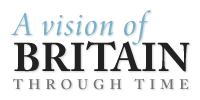In 1887, John Bartholomew's Gazetteer of the British Isles described Northamptonshire like this:
Northamptonshire (or Northampton), south-midland county of England, bounded N. by Leicestershire, Rutland, and Lincolnshire, E. by Cambridgeshire, Huntingdonshire, and Bedfordshire, S. by Bucks and Oxfordshire, and W. by Warwickshire; greatest length, NE. to SW., about 70 miles; greatest breadth, E. ...
to W., about 26 miles; area, 629,912 ac., pop. 272,555. Although the surface appearance of the county is generally hilly there are no elevations of considerable altitude, the highest being near Daventry, where Arbury Hill reaches 804 ft. The NE. part of the county belongs to the Fen district. In some localities, particularly the W. and SW., the scenery is especially attractive; while here and there throughout the co. rich woods and well-watered vales afford pleasing aspects. The chief rivers are the Nen and the Weiland; the Avon forms a part of the N. boundary of the co., the Cherwell of the SW. boundary, and the Learn of the W. boundary; the Ouse has its rise near Brackley in the S. The canal system includes the Union and Grand Junction Canal, besides other similar waterways. On the uplands the soil is a fine brown loam, but the richest portion is found in the black mould of the Fen district. Throughout the whole co. farming is successfully prosecuted, all kinds of cereal and green crops being raised; while upon the splendid pastures large numbers of cattle are reared, principally for the London market. (For agricultural statistics, see Appendix.) Northampton is celebrated for its ash trees, old oaks, and elm avenues. Lias and oolite are the prevailing geological formations. Iron is largely found, and although worked as early as the time of the Roman occupation, its modern mfr. dates only from 1850, since which year remarkable progress has been made by the encouragement of the industry and its consequent productiveness. Apart from ironworking, the great industry of the co. is centred in the mfr. of boots and shoes in the town of Northampton and the towns of the middle of the co. Northamptonshire contains 20 hundreds, 344 pars, with parts of 4 others, the parl. and mun. bor. of Northampton (2 members), part of the parl. and mun. bor. of Peterborough (1 member), the mun. bor. of Daventry, and part of the mun. bor. of Stamford. It is almost entirely in the diocese of Peterborough. For parliamentary purposes the county is divided into 4 divisions - viz., Northern, Eastern, Mid, and Southern, 1 member for each division.
Northamptonshire through time
Northamptonshire is now part of Northamptonshire county. Click here for graphs and data of how Northamptonshire has changed over two centuries. For statistics about Northamptonshire itself, go to Units and Statistics.
Northamptonshire -- but you should check this covers the area you are interested in.GB Historical GIS / University of Portsmouth, History of Northamptonshire | Map and description for the county, A Vision of Britain through Time.
URL: https://www.visionofbritain.org.uk/place/17476
Date accessed: 24th April 2024
Not where you were looking for?
Click here for more detailed advice on finding places within A Vision of Britain through Time, and maybe some references to other places called "Northamptonshire".
